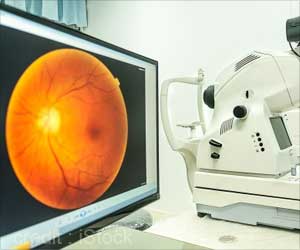Blurred vision, floaters, and unusual light perception – those affected by the rare disease posterior uveitis feel no pain. But the consequences can be severe: About five to ten percent of blindness worldwide is caused by uveitis.
There are different forms of the disease. In posterior uveitis, the retina or choroid in the eye becomes inflamed. While the retina converts the incident light into nerve impulses, the choroid supplies the outer layers of the retina with nutrients.
Advertisement
However, since the different subtypes often require a different therapeutic approach, a reliable diagnosis is all the more important. This is why researchers from the Ophthalmology Department at the University of Bonn investigated a new imaging technique that can assist in the diagnosis of posterior uveitis.
The team evaluated color-coded fundus autofluorescence (Spectrally Resolved Autofluorescence Imaging). The CenterVue (iCare) company from Padua (Italy) provided the newly developed device to the researchers for the examinations.
Autofluorescence: An Emerging Eye Disease Tool
This process involves illuminating the retina with bluish light. The retina absorbs the light and emits it again at a different wavelength. The device measures this fluorescence and splits the signals into a green and a red component.
The green-to-red ratio of the light emitted from each inflammatory focus depends, among other factors, on the exact posterior uveitis subtype involved. The researchers examined the eyes of 45 study participants.
In all of them, the exact subtype of uveitis was diagnosed beforehand. This included ophthalmologic examination findings, laboratory investigations, serologic and radiologic findings, and in some cases genetic and interdisciplinary clinical examinations.
The researchers evaluated the green-red ratio in the fluorescence of the fundus of the eye for about 800 inflammatory foci in the eyes of the patients. The aim is to document disease progression on a long-term basis and to develop recommendations for treatment guidelines.
This technology may also allow better monitoring of posterior uveitis in the future, in addition to more reliable diagnoses.
Source: Eurekalert



